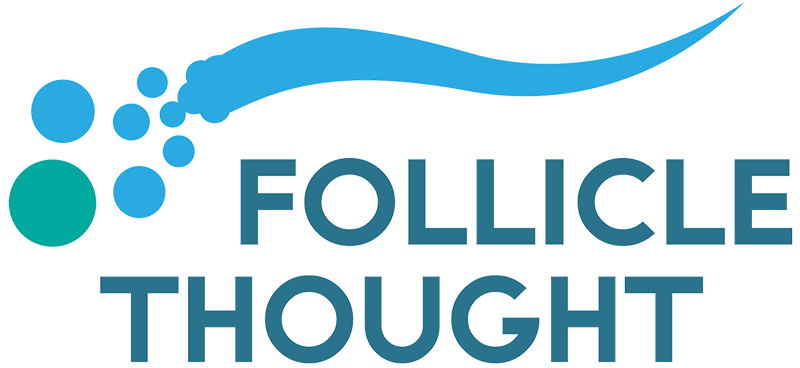Kintor Announces Enrollment for New Trial and Update of Previous Phase 3 for Androgenic Alopecia
Kintor Pharmaceutical has recently announced the enrollment of its first participant in its “Pivotal Clinical Trial”. This is a Phase 2/3 trial in which men with androgenic alopecia will be treated with either vehicle control, 0.5%, or 1% topical for 24 weeks. The trial will be conducted in China, with 222 patients enrolled in each group (666 patients total).
The press release also announced an update for its 52-week Phase 3 trial, “Long-term Safety Clinical Trial”, which completed enrollment in July 2023. Participants were treated with 0.5% tincture twice daily.
Trial Results
- No serious adverse events were reported, the most common being mild itching at the application site.
- After 12, 24, 36, and 52 weeks of treatment, target area hair count (TAHC) and target area non-vellus hair width (TAHW) increased from the baseline:
- TAHC increased by 9.5%, 13%, 11.4%, and 9.7%, respectively.
- TAHW increased by 12.1%, 18.6%, 15.7%, and 10%, respectively (a statistically significant increase from the baseline).
- At week 24, 60.2% of participants had a ≥10 hairs/cm2 change in TAHC from baseline, 28.9% had a ≥20 hairs/cm2 change, and 18% had a ≥30 hairs/cm2 change.
- At Week 52, 48.4% of participants had a ≥10 hairs/cm2 change in TAHC from baseline, 20.4% had a ≥20 hairs/cm2 change, and 11.8% had a ≥30 hairs/cm2 change.
- Hair growth was assessed subjectively by investigators:
- 60.9%, 69.5%, 64%, and 54% of participants showed improved hair growth from the baseline at 12, 24, 36, and 52 weeks respectively.
Reflections
While the results appear promising, there are several potential issues to consider:
- The trial had no placebo or comparator.
- The TAHC and TAHW improvements peaked at 24 weeks and then declined, raising questions about long-term efficacy.
- The percentage of patients achieving ≥10, ≥20, and ≥30 hairs/cm² improvements also decreased from 24 to 52 weeks.
- It is difficult to determine the clinical significance of the percentage increases without knowing the baseline data.
- Regardless, the percentage increases of TAHC are not that high and not statistically significant, indicating that it might not improve long-term hair growth outcomes in a clinically significant way.
Let us know what you think about these results below.


I don’t understand that at all
Kintor Pharmaceutical publishes clinical trials for KX 826 (0.5-1.0%) and cosmetics with the same percentage as the above trial are on sale
considering that the base is KX 826, it is not clear to me what the point of that trial is
you are selling something and in the meantime you are conducting a survey for something that is on sale
Amazon and Koshine sell 0.5 and 1.0%
Another failure. We can put a man on the moon but we can’t figure out how to grow hair.
Actually we can’t put a man on the moon…
I thought baldness had been solved in that the root cause is the death of dermal papillae cells around the hair follicle causing the follicle to shrink over time and that by creating new dermal papillae cells from resilient hair at the base of the scalp and eventually injecting them in the bald areas would solve this and that this was undergoing trials? right now. So why bother with these rub on lotions that in the end will be a temporary measure and money spinner for these companies that develop these products?
I guess we are doomed. I just don’t see anything promising at all. Even those that pass phase 3 have mediocre results.
Kintor is a joke.
Looks to me like it’s impossible to reverse balding and regrow a full head of hair.
All this technology these days and nothing.
Eversince you updated this website like 2 years ago FT everyone left. Poof. I miss talking with Yoda, Mjones, you and the others.
Everything was setup more simple and user friendly back then imo.
I wish Elon Musk had AA. You bet he’d find a way to solve the issue.
In fact he had AA and solved it with a FUE transplant. All the inflated news about top scientific achievements in the field of medicine is actually just a fabrication. The best proof of this is the futile search for AA for the last fifty years which turned out to be a complete mission impossible. It would be good if scientists would admit that their knowledge is tiny and almost insignificant.
I am so tired of waiting thirty years for progress in this area. Disappointed and beyond despair. The FUE method is not for me.
It looks like Elon Musk has had a hair transplant.He doesnt admit it as far as I know.
Search online and theres pics of him seriously balding when he was younger.
I wonder why he doesn’t try to solve the issue,he has the money to make a serious attempt at trying.
Maybe he’s talked to scientists who told him it’s futile and a lost cause,who knows.
No other mega billionaire has invested to try to find a solution.
I fully agree that this is an area where modern “science” has failed to uncover the key mechanisms underlying AA for many years. Although it has been discovered that androgens affect AA, there is a whole series of uncertainties about how to influence this process in order to stop it. It is abundantly clear that we will not see a cure for AA for another 30 years. It’s a great shame. I don’t know how I will bear and come to terms with the fact that in appearance I am turning into a person with whom I do not resonate in the least.